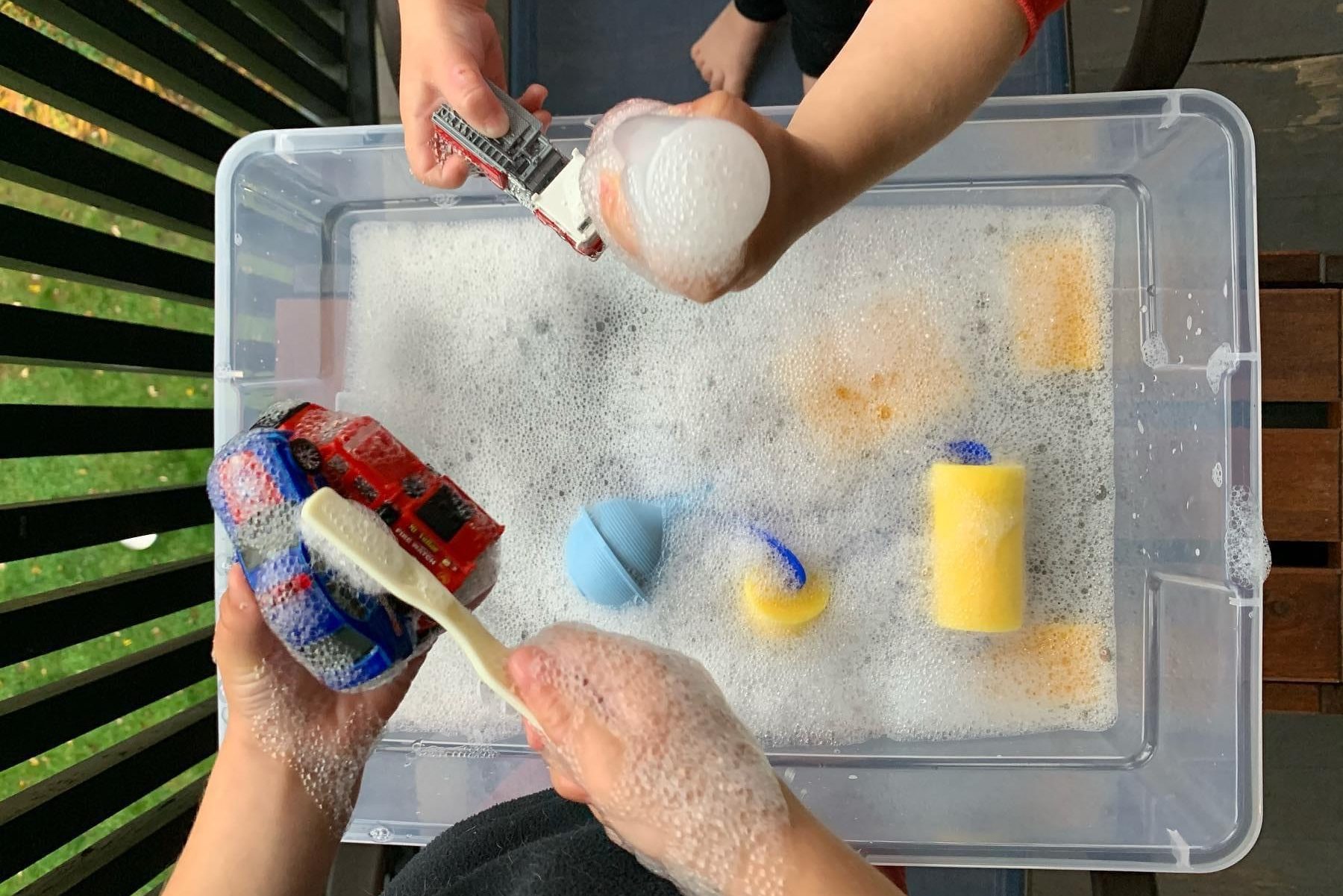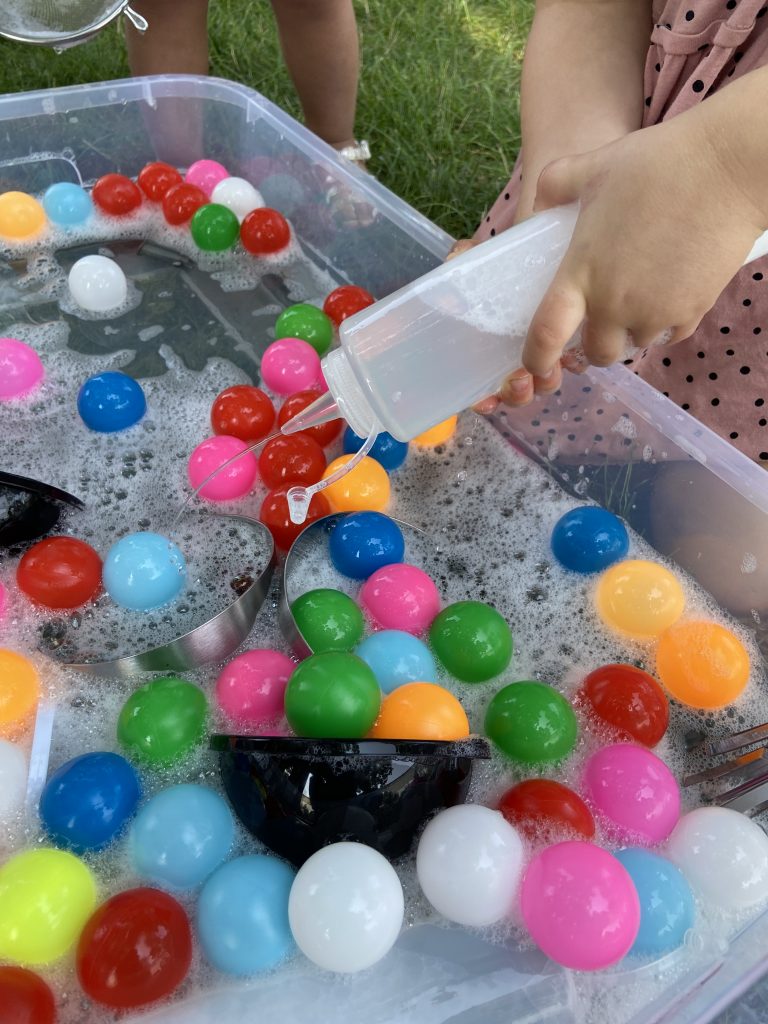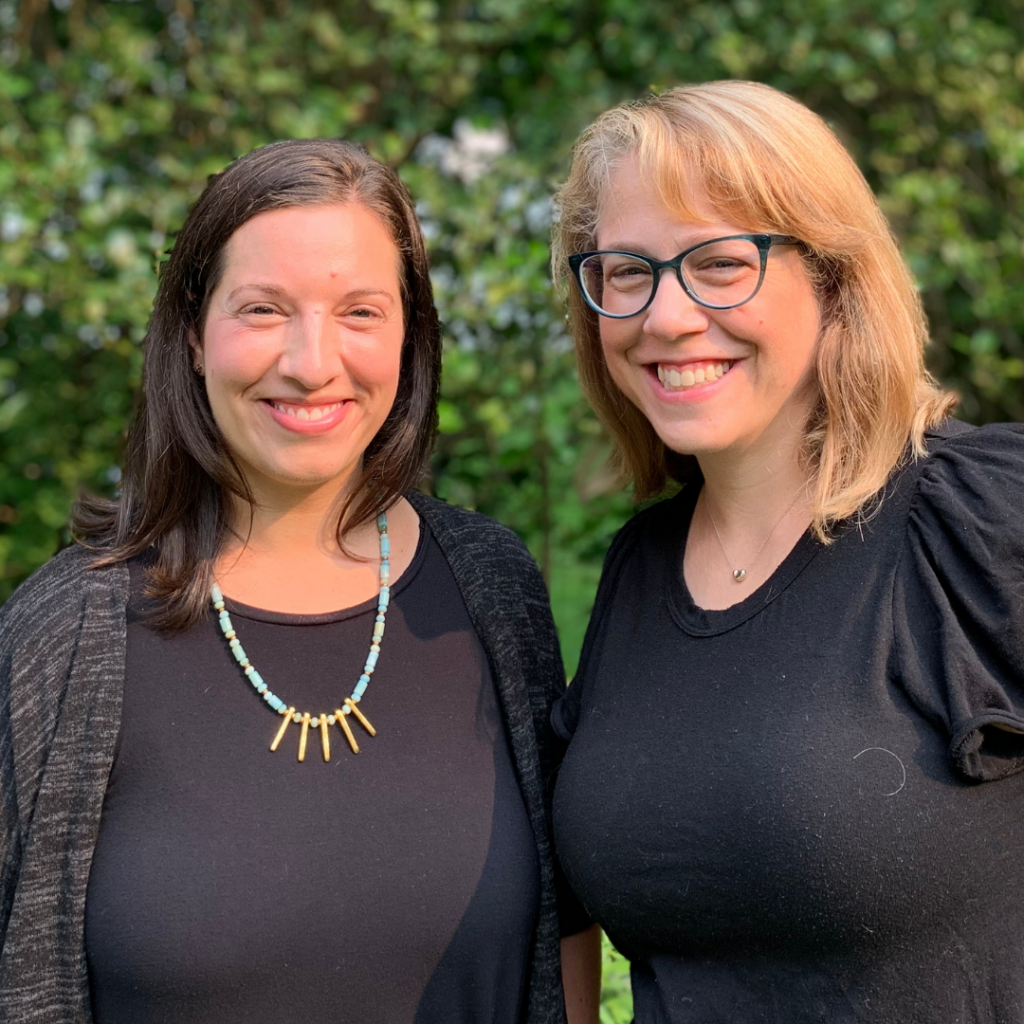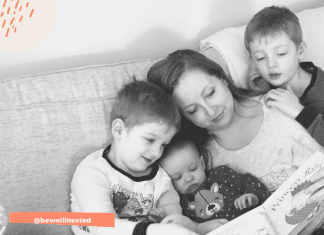“Mom! Look! The ping pong ball floats, and my dinosaur sinks! Isn’t that cool? Why, mom, why?”
Even the simplest sensory play experiences lead to observations about the world and the way it works. With a little foresight and preparation, you can easily create amazing opportunities for children to learn.
Having taught in preschools for more than two decades combined and now running Backyartists, we have discovered plenty of ways to make sensory play exciting for children (and, maybe more importantly, for their parents). Read on for ways to better understand the many skills your children are honing while engaging in this fun and simple play.
Why sensory play?
Everything children learn about the world comes through their senses, and creating sensory play opportunities for your child allows them to learn, grow, and gain important skills. They can see the changes in color when paint drops in water, feel the coolness of ice cubes as they melt, smell the scents of different flowers as they stir them into water to create fairy soup, and even taste the salt on their fingers after playing with playdough. Along with all these sensations, children develop their fine motor skills and their spatial awareness by pouring, scooping, and dumping.
Sensory play offers opportunities for children to develop their pre-math skills, like estimation, counting, and ordering. Ask your child to scoop beads into ice cube trays, and they might begin to notice how much is needed to fill each square in the tray, or they may sort all the beads of each color into different trays or count how many beads they have of a certain type. All of this play helps develop skills they will need later as they explore more and different types of mathematics.
Sensory play is also a great way for children to explore the scientific world through exposure to new materials. They learn how much pressure to apply when working with playdough versus building with blocks or hammering a golf tee into a piece of foam. Children gain new vocabulary skills as you model words like soft, hard, scoop, and pour. Try asking simple questions that focus on contrast, like “Are the bubbles smooth or rough?” before moving on to more complex and open-ended questions, such as “How do the bubbles feel?” Questions like these get children thinking and noticing details, and their vocabularies grow too!
Try putting out a sensory activity during a playdate; children will work on social and emotional growth as they work next to other children, take turns with materials, and talk about what they’re doing. Young children may partake in what is called “parallel play,” in which they simply play and experience the new materials together, side by side; older children may partake in something more akin to “dramatic play,” in which they enact elaborate scenarios that are either novel or based on real-life scenarios. Children often play out the intricacies of their own lives, acting out situations they are trying to make sense of.
Ideas for summer sensory play
Now that you have an idea of why sensory play is important, it’s time to get started! With the heat of summer upon us, water play is a great introduction. Below, you will find some tried and true ideas for getting started; however, with just a few extra minutes of searching online, you can find a ton of ideas for sensory activities beyond water play.
Create a car wash. Try using a bin of soap and water, a few play cars, a cut-up sponge, and an old toothbrush. Have children wash the cars in the “car wash.”

Make “nature soup.” Go on a collection walk to gather materials, such as flower petals, leaves, acorns, dirt, and sticks. Take your found materials and put them in a bowl or bucket together with water and mix them up. See what magic happens.
 Paint with water. Dip a paintbrush in water and paint on the sidewalk, fences, or playground structures.
Paint with water. Dip a paintbrush in water and paint on the sidewalk, fences, or playground structures.
Create a mud kitchen. Grab some old kitchen utensils, pots, pans, and some dirt and water.
Explore temperature and melting. Freeze some toys and water in ice cube trays (dinosaurs are a favorite in our houses) and then let kids play with how they change when added to a container of water, drizzled with salt, or sprayed with spray bottles.
Experiment with buoyancy. Raid the recycle bin, or take some toys from around the house, add them to a bin of water, and have kids find out what sinks and floats.

There are so many ways to get your kids engaged in sensory play and learning about their world. Try some of these fun and easy ideas today!
 ABOUT OUR GUEST AUTHORS:
ABOUT OUR GUEST AUTHORS:
Rachel Miller and Nicole Werther are both experienced early childhood educators with master’s degrees and more than 20 years of combined teaching experience. Together they own the small business Backyartists, which curates process art and sensory play materials and kits for preschool-aged children. They also offer playgroups and classes in the Arlington and Cambridge areas. Check out their website, www.backyartists.com, for the most up to date offerings.














